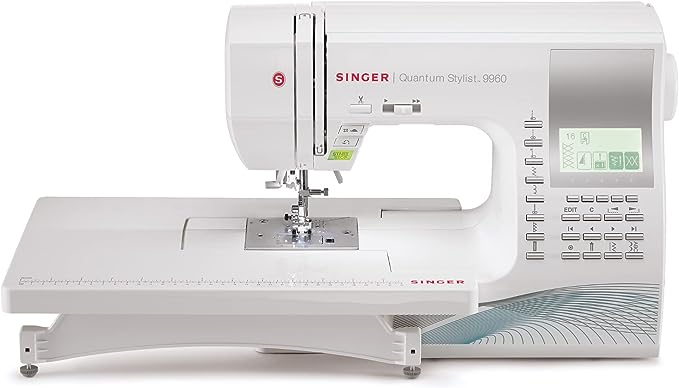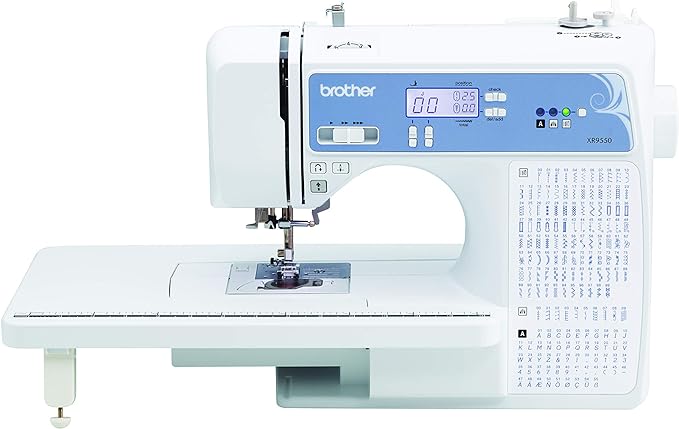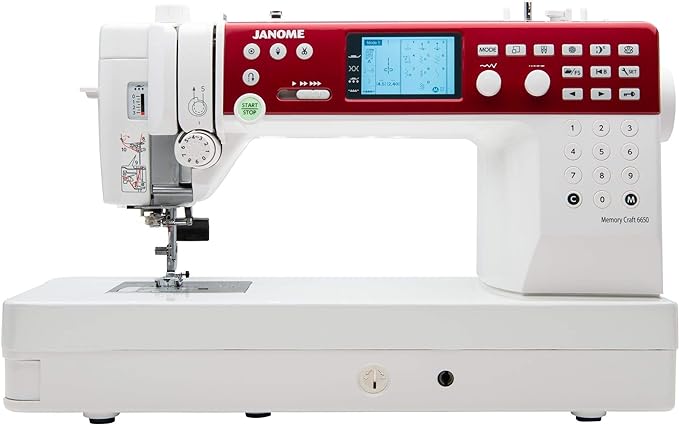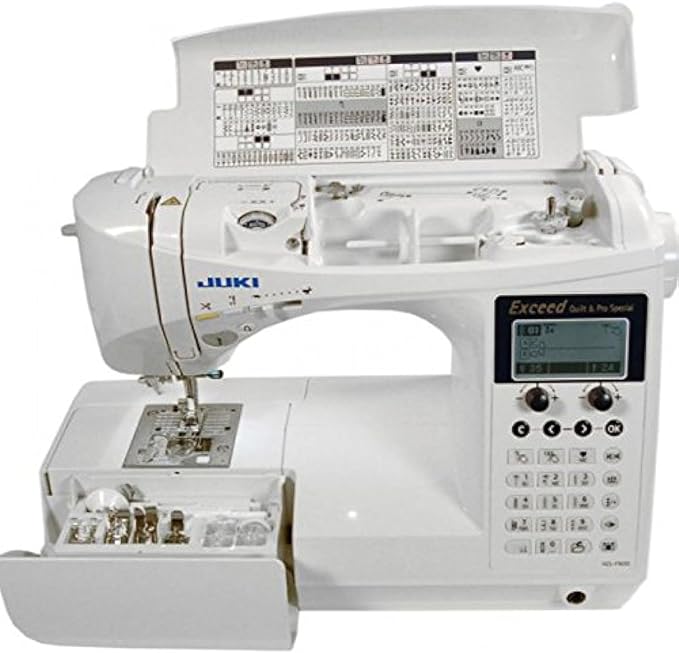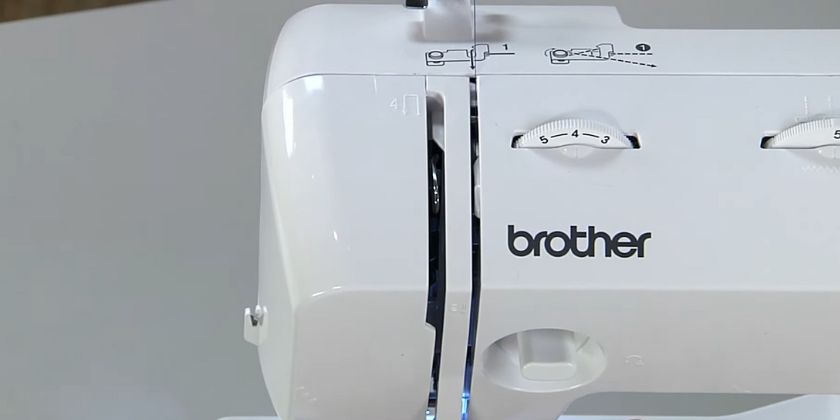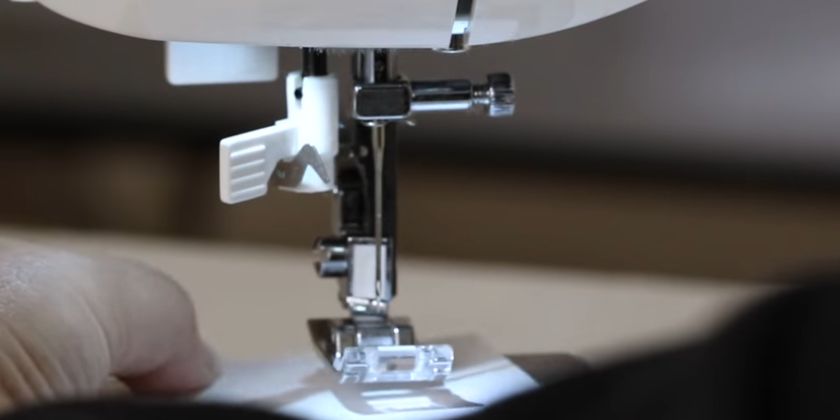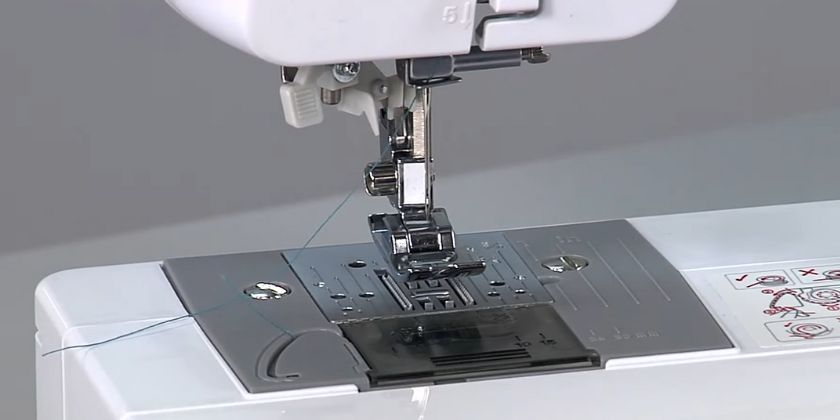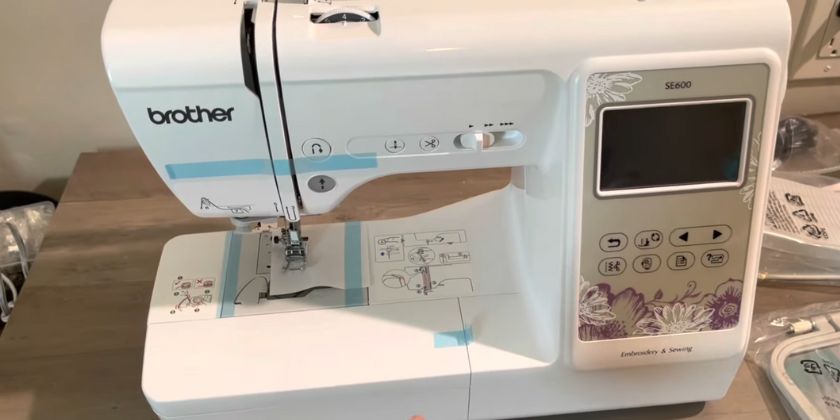Free-motion quilting is one of the advanced sewing techniques that can help you express your creativity in quilting projects.
Although this technique takes some time to master, you need a capable quilting machine at the same time.
You cannot use any random sewing machine for free-motion quilting as it must have features like drop-feed dogs, quilting feet, speed adjustment, needle position control, etc.
I tested some highly-rated sewing machines and found the Singer 9960 to be ideal for free-motion quilting. It gives you a perfect price and performance combo and can easily handle heavy materials.
However, some users might prefer slightly cheaper or pricier machines depending on their budget and requirements.
That’s why I’ve compiled this list of 4 best sewing machines for free motion quilting. Each of these machines has a different set of features and price tags so that you can pick one according to your preference.
Top 4 Best Sewing Machines For Free Motion Quilting Reviews
- 1. SINGER 9960 – Best Sewing Machine For Free Motion Quilting
- 2. Brother XR9550 – Best Budget Sewing Machine For Free Motion Quilting
- 3. Janome MC6650 – Best High-End Sewing Machine For Free Motion Quilting
- 4. Juki HZL-F600
- What is Free Motion Quilting?
- What is the Best Stitch Length For Free-Motion Quilting?
- Why Do I Have Skipped Stitches In Free-Motion Quilting?
- Do You Need a Hoop For Free-Motion Quilting?
- Do You Need Gloves For Free-Motion Quilting?
- Where Do You Start Free-Motion Quilting on a Quilt?
- Do You Square Up a Quilt Top Before Or After Quilting?
1. SINGER 9960 – Best Sewing Machine For Free Motion Quilting
Our Pick
- 600 built-in stitches
- 850 stitches per minute speed
- 5mm stitch length
- 7mm stitch width
The SINGER Quantum Stylist 9960 takes sewing to the next level with its impressive lineup of 600 built-in stitch patterns, which includes five alphanumeric fonts. You can see this helpful information, including stitch pattern, length, and width, right from the LCD screen.
Threading a sewing machine can sometimes be daunting. Thanks to its automatic needle threader, you can say goodbye to eye strain and frustration.
Speed is also a key factor in sewing machines, and the SINGER Quantum Stylist 9960 doesn’t disappoint. With a max sewing speed of 850 stitches/minute, your projects can be completed quickly.
This machine also comes with various presser feet to make your sewing experience even more convenient. These include an all-purpose foot, a zipper foot, a buttonhole foot with an underplate, a satin stitch foot, an open-toe foot, etc.
An extension table is provided for an extra sewing area and can come in handy for larger projects.
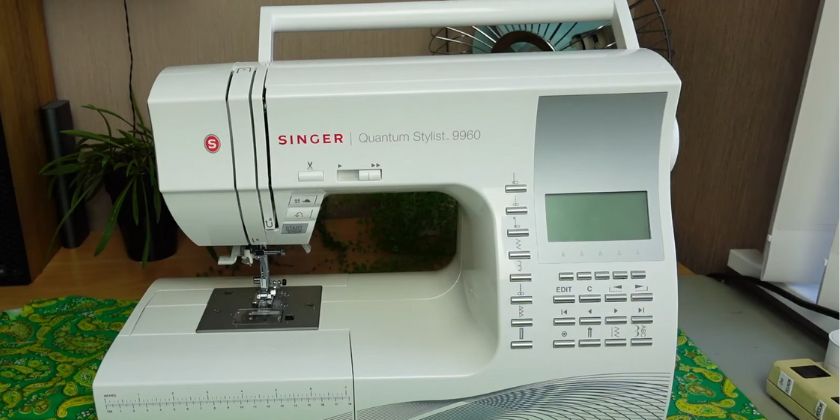
The included hard sewing machine case protects your machine from accidents, and the on-board storage keeps all your accessories in one place.
The other features I liked in this sewing machine are the free arm, automatic reverse, and thread cutter features.
In case you don’t know, the free arm feature allows you to easily access cuffs, collars, and pant hems while the automatic reverse function reinforces the stitches quickly.
Similarly, the one-touch automatic thread cutter enables you to easily trim the threads when you’ve finished sewing with the push of a button.
Lastly, the horizontal threading feature helps to reduce thread breakage.
Pros and Cons
Pros
- It comes with a lot of accessories
- Auto-pilot mode comes in handy when adding decorations to your projects.
- The drop-in bobbin comes with a clear plastic cover
- The LCD comes with brightness control.
Cons
- A steep learning curve for the beginners
2. Brother XR9550 – Best Budget Sewing Machine For Free Motion Quilting
Budget Pick
- 165 built-in stitches
- 850 stitches per minute speed
- 5mm stitch length
- 7mm stitch width
- 25-year warranty
If you’re into quilting but don’t have $400-$500 to spare, consider the Brother X9550 machine.
It offers many of the features found in Singer 9960 and comes at almost half of the price.
With 165 unique built-in utility, decorative, and heirloom stitches, eight one-step auto-size buttonhole styles, and 55 alphanumeric options, you’ll never run out of creative ideas.
An LED-lit work area keeps everything bright so you never miss a stitch – even in low light conditions.
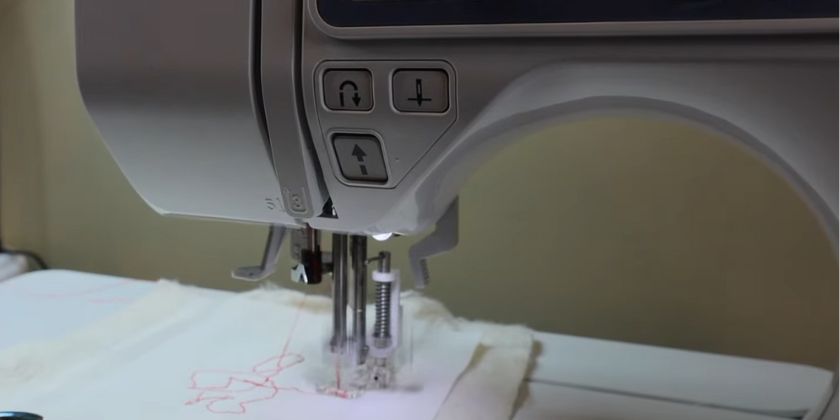
The X9550 machine also has an advanced needle threading system, making it easy to thread needles quickly and accurately. You will also love the exceptional feed system that works on almost any fabric for flawless stitching each time.
This machine includes eight quick-change presser feet. These include a zigzag foot, a buttonhole foot, an overcasting foot, a blind stitch monogramming foot, and a quilting foot.
Plus, there is a protective hard carrying case to help your Brother XR9550 withstand life on the go and an oversized wide table for larger quilt projects.
Lastly, the quick-set bobbin lets you quickly and easily prepare for the next project, and the Thread Sensor alerts you when the thread is running low.
Pros and Cons
Pros
- Easy to use for beginners
- It’s lightweight and can be easily moved around.
- 25-year warranty
Cons
- Bobbin winding could’ve been better
- No automatic thread cutter
3. Janome MC6650 – Best High-End Sewing Machine For Free Motion Quilting
Upgrade Pick
- 170 built-in stitches
- 1000 stitches per minute speed
- 5mm stitch length
- 9mm stitch width
The Janome MC6650 is ideal for those who have some extra budget and want a flagship sewing machine for free-motion quilting.
The first thing you’ll notice in this machine is the 10″ All-Metal Seamless Flatbed, which acts like an ideal workspace for large projects.
The Start/Stop button provides fingertip control when stitching. And the ‘favorite stitch’ setting by default ensures your favorite settings are ready to go when you turn it on.
With 172 built-in stitches (including many for quilting), nine automatic one-step buttonholes, and upper/lowercase 5mm and 7mm block and script alphabets, you can make all your sewing dreams come true.
The needle plate can be switched with a single button press, while the top drop-in bobbin system works more efficiently and requires lubricating than a front-loading bobbin system.
On top of that, the built-in automatic needle threader and the threading diagrams printed right on the machine enable you to start the sewing process without any waiting.
Other features include the 7-piece feed dog system that pulls the fabric through the machine (so each stitch is done precisely), while the adjustable presser foot pressure allows quilters to customize their output with just a turn of a dial.
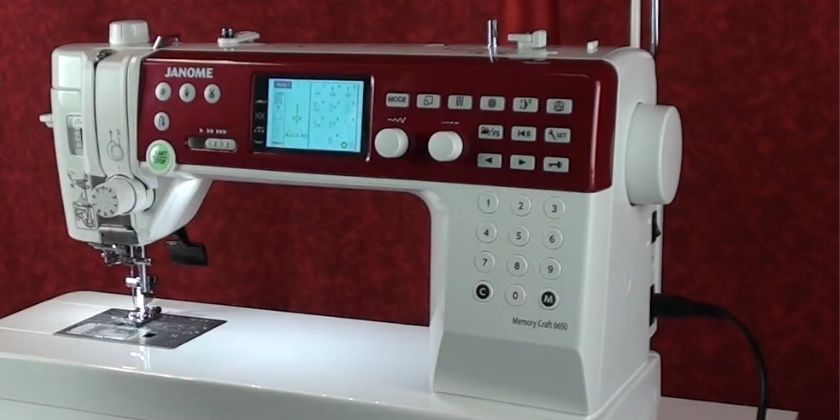
I also liked the industrial-style thread tension control, which gives even more assurance that your project will be perfect.
Plus, the retractable dual-thread guide simplifies using twin needles for extra professional-looking pieces.
One unique thing about this sewing machine is that the easy convenience buttons make quilting a dream. With the reverse button, the programmable thread trimmer, the locking stitch button, and the needle up/down button, all your quilting needs have become more accessible.
The informative 3.6″ LCD screen also shows detailed information to help customize and choose stitches, feed dog position, width, and length settings, and even recommends which foot to use for each stitch.
The MC6650 offers customers complete freedom over their creativity and is equipped with 12 different presser feet. These include a zigzag foot set on the machine, a blind hem foot, an overcast foot, a rolled hem foot, a zipper foot, a darning foot, and a free-motion quilting set with a closed toe.
In addition to the automatic buttonhole foot and a lint brush, you get different accessories in the form of a seam ripper, six bobbins, two small and two large spool caps, a quilting guide, etc.
Pros and Cons
Pros
- Operates quietly
- Separate bobbin winder
- This is a dual-voltage sewing machine that can run at 80V-240V.
- Extra throat room for large-scale quilting.
Cons
- Complicated for the beginners
- The knee lifter could’ve been included
4. Juki HZL-F600
- 225 stitch patterns
- 900 stitches/minute speed
- 5mm stitch length
- 7mm stitch width
The last quilting machine of this roundup is the Juki HZL-F600.
One of the standout features of this machine is its large variety of patterns and stitches.
With 255 sewing patterns and 4 fonts, you’ll have endless options to create beautiful and intricate designs. Whether you want to add decorative touches, sew utility stitches, or even personalize with alphabet stitching, this machine covers you.
The easy pattern selection and large LCD display make navigating through all your options a breeze.
When it comes to buttonholes, the Juki HZL-F600 reigns supreme. With 16 buttonhole styles, including the highest quality industrial style, your garments will always have professional-looking finishes.
The large, wide work surface provides ample space for stitching, measuring 8″x12-1/4″, giving you 4″ more than the average workspace.
This means more freedom and ease to work on larger quilts and projects.
Another thing I liked about the Juki HZL-F600 is its easy threading functionality, which can be done from a seated position. No more struggling to thread your needle.
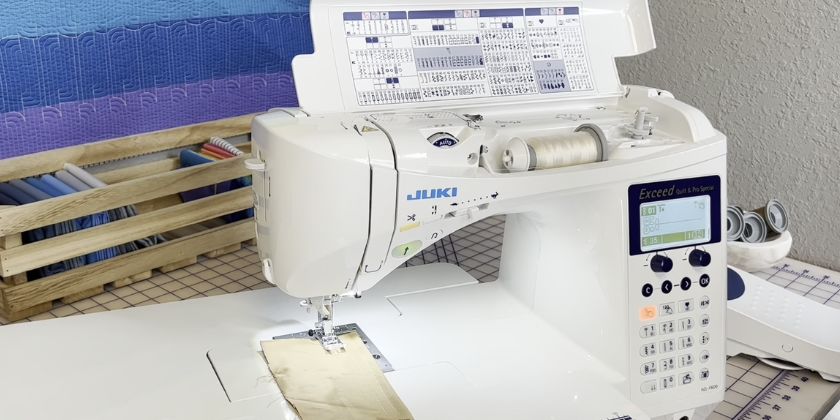
Additionally, it offers automatic thread trimming at the touch of a button or with a simple heel motion of the foot pedal. This allows you to transition between different stitching techniques or materials seamlessly.
Speed is not a concern with the Juki HZL-F600. It offers high-speed sewing up to 900 stitches per minute, ensuring you can complete your projects quickly.
But the good thing is that you can also slow down this speed to 80 stitches per minute, making it perfect for intricate or delicate work.
The included walking foot is ideal for sewing multiple layers, including denim and quilting, and the durable quilting foot and quilt guide provide precision and control.
Lastly, this quilting machine comes with an array of accessories, including a soft-sided dust cover, making it perfect for a wide range of everyday sewing projects.
Pros and Cons
Pros
- Adjustable presser foot pressure
- It can easily sew multiple layers of thick materials.
- You don’t need to disengage the main motor to wind the bobbin
- Extra working space for quilting
Cons
- It can be overwhelming for beginners.
What is Free Motion Quilting?
Free-motion quilting is a technique used to create intricate designs on quilted fabric. It involves moving the material freely under the needle of a sewing machine rather than following pre-drawn patterns or guidelines.
Traditionally, quilting involves stitching together layers of fabric and batting to make a warm and decorative covering. The top layer, known as the quilt top, can comprise various shapes and designs.
Free motion quilting allows for more creativity in the design process, as the quilter has complete control over the stitching and can create unique patterns and textures.
Quilting Machines vs. Regular Sewing Machines
Firstly, quilting machines are specifically designed for quilting. In contrast, regular sewing machines are more versatile and can be used for other sewing projects.
This means that quilting sewing machines have features and functions tailored to the needs of quilters, making the process more efficient and producing higher-quality results.
One such feature is the larger throat space, which allows more room to maneuver large pieces of fabric, making it easier to create intricate designs and patterns.
In contrast, regular sewing machines have a smaller throat space, limiting the size and complexity of quilting projects that can be undertaken.
Another advantage of quilting machines is their ability to sew at high speeds, as quilting requires many stitches.
Additionally, motion quilting machines often have a more extensive selection of built-in stitches and patterns specifically for quilting. This saves quilters time and effort as they do not have to manually adjust settings or change presser feet, making the process more streamlined and efficient.
It is also worth noting that motion quilting machines are generally more durable and sturdy than regular sewing machines. Quilting involves working with multiple layers of fabric, which can strain the machine. That’s why these machines are built to withstand this, ensuring they last longer and require less frequent maintenance.
What is the Best Stitch Length For Free-Motion Quilting?
The optimal stitch length for free-motion quilting is between 2.5 and 3.0 levels. This length is the best choice as it provides enough structure to keep your fabric in place without sacrificing too much of its flexibility and drape quality, which could ruin your quilt design.
When setting the stitch length on your machine, consider how tight or loose you want the curvy quilting lines to be. A smaller stitch length will result in tighter curves, while a larger one will give more rounded shapes.
It also depends on your thread thickness. If the thread is thicker, then use a longer stitch. But if it’s thinner, opt for a shorter one.
Another important consideration when it comes to free-motion quilting is tension. Make sure that both upper and lower tensions are properly balanced so that there isn’t too little or too much pull on each side, making stitching inaccurate or difficult.
Why Do I Have Skipped Stitches In Free-Motion Quilting?
The most common cause of skipped stitches is thread tension, which can be too tight or loose. If your thread tension is slightly off, it can affect how the needle penetrates the fabric, leading to skipped stitches.
It’s important to adjust the tension according to your specific machine and the type of fabric you’re using, so check your user manual for specifics on making those adjustments.
Second, incorrect needle size or style can contribute to skipped stitches if a machine isn’t equipped with the appropriate type of needle for free-motion quilting projects.
Another common reason is the sewing machine needle, which is either dull or slightly bent.
Over time, needles will become dull and lose their sharpness as they repeatedly pierce through layers of fabric, which makes it difficult to hook and loop with the bobbin thread to form perfect stitches.
Do You Need a Hoop For Free-Motion Quilting?
Yes, you need a hoop for free-motion quilting. Free-motion quilting is a machine embroidery technique in which the user controls the fabric movement using a hoop to hold it in place.
The main advantage of this type of quilting is that it allows more creativity and flexibility than traditional sewing techniques.
A free-motion hoop provides stability to your project so that you can easily control the direction and speed of your movements while working on a design.
It also ensures even tension across all points, minimizing puckers or tucks as you proceed. Moreover, it gives smooth lines and accurate stitching patterns since each stitch stays put when adjusted within the hoop’s tensioner area.
Do You Need Gloves For Free-Motion Quilting?
Without gloves, the needle from your sewing machine can cause many problems.
For starters, it can catch on your fingers and push them against the moving needle plate or presser foot. In addition to being painful, it can result in a serious injury if you’re not wearing gloves while free-motion quilting.
Not only are gloves protective equipment for preventing hand injuries while using a sewing machine, but they also provide an improved grip on the fabric when handling it with the hands and guiding it through the free-motion quilt process.
The thin layer of synthetic leather that covers most quilting glove palms provides enough cushioning between your skin and fabric to make maneuvering around hard-to-reach areas much easier and more enjoyable than without them.
Because of the grip these specialized gloves provide, fabric manipulation becomes effortless and precise instead of slipping out from under your control due to sweat.
Where Do You Start Free-Motion Quilting on a Quilt?
Whenever you start free-motion quilting on a quilt, it is best to work the pattern in left-to-right and right-to-left motions, starting with the lower bottom corner.
This approach helps keep your quilting lines even from side to side, which would be more difficult if you moved back and forth from one edge of the quilt to another.
When beginning free motion quilting, always ensure your bobbin thread has been correctly threaded into your machine, as this could significantly affect the quality of your finished product.
You must also practice making curved patterns on scrap fabric before tackling a large project, such as a full-size quilt. Lastly, adjusting tension can significantly impact how each stitch will appear, so be sure not to forget this crucial step.
Do You Square Up a Quilt Top Before Or After Quilting?
Squaring up a quilt top ensures all sides are even and squared off, giving you more consistent results when it comes time to bind your work.
The best time to square up your work is once you have finished quilting before attaching any binding. This provides you with more options for making adjustments since all aspects (length, width, etc.) can be adjusted at this point without affecting other parts or components of your project.
